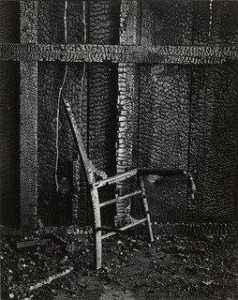Wynn Bullock
Wynn Bullock
Miejsce: Chicago
Urodzony: 1902
Śmierć: 1975
Biografia:
Wynn Bullock was an American photographer whose work is included in over 90 major museum collections around the world. He received substantial critical acclaim during his lifetime, published numerous books and is mentioned in all the standard histories of modern photography.
Bullock was born in Chicago and raised in South Pasadena, California. As a boy, his passions were singing and athletics (football, baseball, swimming and tennis). After high school graduation, he moved to New York to pursue a musical career and was hired as a chorus member in Irving Berlin’s Music Box Revue. He occasionally sang the primary tenor role when headliner John Steele was unable to appear and then was given a major role with the Music Box Review Road Company. During the mid-1920s, he furthered his career in Europe, studying voice and giving concerts in France, Germany and Italy.
While living in Paris, Bullock became fascinated with the work of the Impressionists and post-Impressionists. He then discovered the work of Man Ray and László Moholy-Nagy and experienced an immediate affinity with photography, not only as an art form uniquely based on light, but also as a vehicle through which he could more creatively engage with the world. He bought his first camera and began taking pictures.
During the Great Depression of the early 1930s, Bullock stopped his European travels and settled in West Virginia to manage his first wife’s family business interests. He stopped singing professionally, completed some pre-law courses at the state university, and continued to take photographs as a hobby. In 1938, he moved his family back to Los Angeles and enrolled in law school at the University of Southern California where his mother Georgia Bullock (California’s first woman jurist) had studied law. Completely dissatisfied after a few weeks, he left USC and became a student of photography at the nearby Art Center School.
From 1938 to 1940, Bullock became deeply involved in exploring alternative processes such as solarization and bas relief. After graduation from Art Center, his experimental work was exhibited in one of L.A. County Museum’s early solo photographic exhibitions. During the early 40s, he worked as a commercial photographer and then enlisted in the Army. Released from the military to photograph for the aircraft industry, he was first employed at Lockheed and then headed the photographic department of Connors-Joyce until the end of the war.
Remarried, and with a new daughter, Bullock traveled throughout California from 1945 to 1946, producing and selling postcard pictures while co-owning a commercial photographic business in Santa Maria. He also worked on developing a way to control the line effect of solarization for which he later was awarded two patents. In 1946, he settled with his family in Monterey, where he had obtained the photographic concession at the Fort Ord military base. He left the concession in 1959, but continued commercial free-lance work until 1968.
A major turning point in Bullock’s life as a creative photographer occurred in 1948, when he met Edward Weston. Inspired by the power and beauty of Weston’s prints, he began to explore "straight photography" for himself. Throughout the decade of the 1950s, he devoted himself to developing his own vision, establishing deep, direct connections with nature. A lifelong learner, he also read widely in the areas of physics, general semantics, philosophy, psychology, eastern religion and art. Studying the work of such people as Einstein, Korzybski, Whitehead, Bertrand Russell, LaoTzu and Klee, he kept evolving his own dynamic system of principles and concepts that both reflected and nurtured his creative journey.
In the mid-1950s, Bullock’s artistry came into the public spotlight when Edward Steichen chose two of his photographs to include in the 1955 The Family of Man exhibition at the Museum of Modern Art. At the Corcoran Gallery in Washington, DC, his photograph "Let There Be Light," was voted the most popular of the show. The second, "Child in Forest," became one of the exhibition’s most memorable images. By the end of that decade, his work was being featured in many exhibitions and publications worldwide.
During the early 60s, Bullock departed from black-and-white imagery and produced a major body of work that he referred to as "Color Light Abstractions". For him, these photographs represented an in-depth exploration of light, manifesting his belief that light is a great force at the heart of all being, "perhaps," as he said, "the most profound truth in the universe."
Although he was tremendously excited about this work, it proved to be ahead of its time in terms of available resources to reproduce it, and it remained largely unknown for almost 50 years. In 2008, the family estate started making high-resolution scans of his original 35 mm Kodachrome slides, producing archivally stable prints, and exhibiting and publishing the imagery.
More...
Wikipedia link: Click Here














